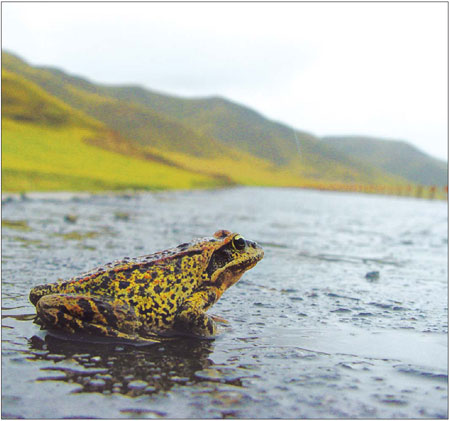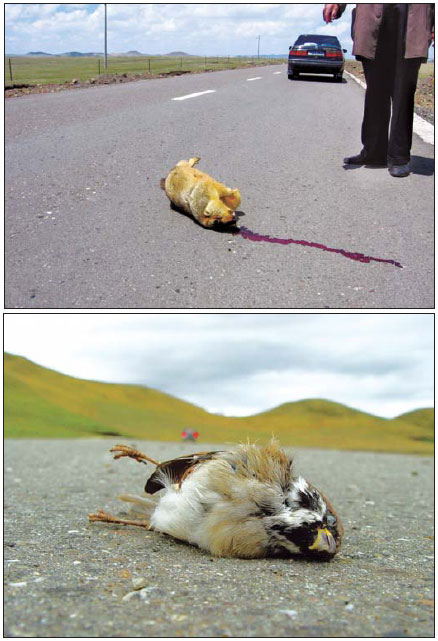Life
Road to disaster
By Liu Zhihua (China Daily)
Updated: 2011-01-10 08:08
 |
Large Medium Small |
|
A frog attempts to cross the highway cutting through Zoige Wetland Nature Reserve. Photos by Dai Qiang / for China Daily |
|
A marmot (above) and a snow finch (below) become roadkill statistics on the Zoige highway in Sichuan province. |
As China develops at a startling pace so too has its road network, which is causing problems for wildlife, even in nature reserves. Liu Zhihua reports.
For many years Shen You, council chairman of the Chengdu Bird Watching Society in Sichuan province, had wanted to see the rare and protected Chinese mountain cat. Then, in August 2010, while driving in Sichuan's Zoige Wetland Nature Reserve, along National Highway 213, he saw one ?dead on the road after being run over. "I felt bad. I never expected the first time I saw a Chinese mountain cat would be like this,?Shen says.
The mountain cat is one of many hundreds of thousands of wildlife casualties, as the country's network of roads develops fast.
Dai Qiang, an associate researcher at Chengdu Institute of Biology of the Chinese Academy of Sciences, says car accidents cause thousands of wild animals deaths every month in the reserve, on the eastern fringe of the Qinghai-Tibetan Plateau.
It is one of the world's largest alpine wetlands, but there are three major roads in the vicinity. During the breeding season (April to May), traffic accidents peak.
Wang Yun, a researcher at China Academy of Transportation Sciences, says six wild horses died after road accidents, from August to October, in 2007, at the Kalamaili Ungulates Nature Reserve in Xinjiang Uygur autonomous region, which was 10 percent of the dwindling wild horse population at the reserve.
Roadkill is just one of the negative effects that highways are having on wildlife.
"The most threatening long-term peril is the fragmentation of habitat and disruption of migration and gene flows," says Zhang Zhengwang, vice dean of the Institute of Ecology at Beijing Normal University.
Interfering in migration results in reduced mating opportunities between divergent populations, and thereby reduces gene flow, leading to inbreeding and in extreme cases, extinction.
"We need to pay more attention to wild animals that are not able to migrate, such as snakes," Zhang says.
It's not all bad news, however. When the Simao-Xiaomengyang Expressway - the first expressway to cut through rain forests in Xishuangbanna, Yunnan province - was being built in 2003, the migrations of animals were taken into consideration.
Sixteen bridges and two tunnels were built to assist wildlife migration, particularly for Asian elephants.
However, later research showed just seven bridges and one tunnel were used by the elephants, according to Zhang Li, an associate professor at College of Life Sciences, Beijing Normal University.
The reason is that the elephants only use the crossing zones that are part of their migration routines. The rest of the time they just follow their old routes, often over busy roads.
"It's good to think about the safety of wildlife alongside roads, but the (solutions) should be based on solid research," Zhang Li says.
"What we need most is comprehensive and basic research on the relationship between roadways and wild animals," says Wang Yun at the China Academy of Transportation Sciences.

